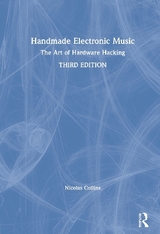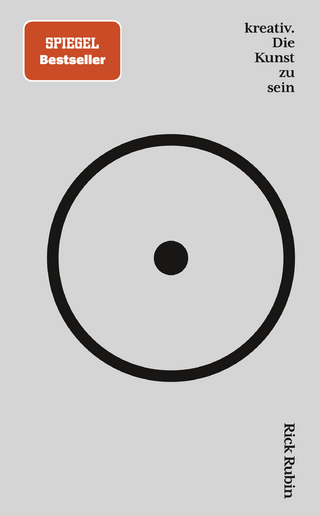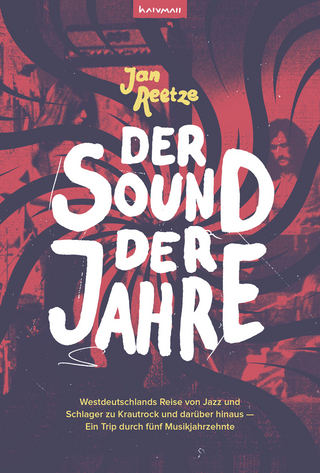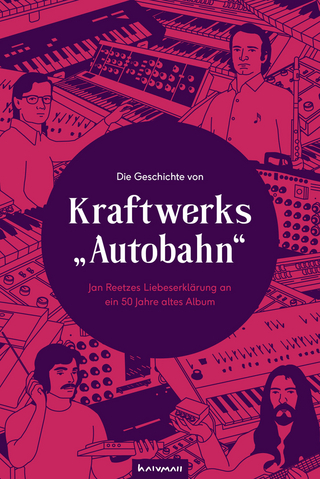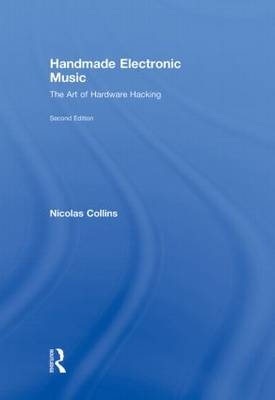
Handmade Electronic Music
Routledge (Verlag)
978-0-415-99609-9 (ISBN)
- Titel erscheint in neuer Auflage
- Artikel merken
This revised and expanded second edition is extensively illustrated and includes a DVD featuring eighty-seven video clips and twenty audio tracks by over one hundred hackers, benders, musicians, artists, and inventors from around the world, as well as thirteen video tutorials demonstrating projects in the book. Further enhancements include additional projects, photographs, diagrams, and illustrations.
Nicolas Collins, an active composer and performer of electronic music, and has worked with John Cage, Alvin Lucier, David Tudor, and many other masters of modern music. Dr. Collins is Professor of Sound at The School of the Art Institute of Chicago, and has led hacking workshops around the world. He has been Visiting Artistic Director of STEIM (Amsterdam) and a DAAD composer-in-residence in Berlin. Since 1997 he has been editor-in-chief of Leonardo Music Journal.
Foreword David Behrman. Acknowledgment. Introduction. Part 1: Starting 1. Getting Started: Tools and Materials Needed 2. The Seven Basic Rules of Hacking: General Advice Part 2: Listening 3. Circuit Sniffing: Eavesdropping on Hidden Electromagnetic Music Art & Music 1: Mortal Coils 4. In/Out: Speaker as Microphone, Microphone as Speaker - the Symmetry of it All 5. The Celebrated Jumping Speaker of Bowers County: Twitching Loudspeakers with Batteries 6. How to Solder: An Essential Skill 7. How to Make a Contact Mike: Using Piezo Disks to Pick Up Tiny Sounds Art & Music 2: John Cage - The Father of Invention Art & Music 3: Piezo Music 8. Turn You Tiny Wall Into a Speaker: Resonating Objects with Piezo Disks, Transformers, Motors, and More Art & Music 4: David Tudor and “Rainforest” Art & Music 5: Drivers 9. Tape Heads: Playing Your Credit Cards Art & Music 6: Tape 10. A Simple Air Mike: Cheap Condenser Mike Elements Make Great Microphones Part 3: Touching 11. Laying of Hands: Transforming a Portable Radio into a Synthesizer by Making Your Skin Part of the Circuit Art & Music 7: The Cracklebox 12. Tickle the Clock: Finding the Clock Circuit in Toys 13. Hack the Clock: Changing the Clock Speed for Cool New Noises 14. Ohm’s Law for Dummies: How to Understand Resistors Art & Music 8: Composing Inside Electronics 15. Beyond the Pot: Photocells, Pressure Pads, and Other Ways to Control and Play Your Toy Art & Music 9: Circuit Bending 16. Switches: How to Understand Different Switches, and Even Make Your Own 17. Jack, Batt, and Pack: Powering and Packaging Your Hacked Toy Part 4: Building 18. The World’s Simplest Circuit: Six Oscillators on a Chip, Guaranteed to Work 19. From Breadboard to Circuit Board: How to Solder Up Your First Circuit 20. Getting Messy: Oscillators That Modulate Each Other, Feedback Loops, Theremins, Tone Controls, Instability, Clocks for Toys, Crickets 21. On/Off (More Fun with Photoresistors): Gating, Ducking, Tremolo, and Panning 22. Amplification and Distortion: A Simple Circuit That Goes from Clean Preamp to Total Distortion, and an Envelope Follower 23. Analog to Digital Conversion, Sort Of: Modulating Other Audio Sources with Your Circuits, Pitch Tracking, and Sequencers Part 5: Looking 24. Video Music/Music Video: Translating Video Signals into Sound, Hacking Cheap Camera Circuits, and Extracting Sounds from Remote Controls Art & Music 10: Visual Music 25. LCD Art: Making Animated Modern Daguerreotypes and Alternative Video Projectors Part 6: Finishing 26. Mixers, Matrices and Processing: Very Simple, Very Cheap, Very Clean Mixers, and Ways of Configuring Lots of Circuits 27. A Little Power Amplifier: Cheap and Simple 28. Analog to Digital Conversion, Really: Connecting Sensors to Computers Using Game Controllers Art & Music 11: The Luthiers 29. Power Supplies: Carbon Footprints from AA to EEE 30. The Future is Now Appendices A: Resources B: Tools and Materials Needed C: The Rules of Hacking D: Notes for the DVD. Notes and References. Illustration Credits. Index
| Erscheint lt. Verlag | 22.5.2009 |
|---|---|
| Zusatzinfo | Following Electronic & Experimental Music; 114 Line drawings, black and white; 256 Halftones, black and white |
| Verlagsort | London |
| Sprache | englisch |
| Maße | 178 x 254 mm |
| Gewicht | 816 g |
| Themenwelt | Kunst / Musik / Theater ► Musik ► Pop / Rock |
| ISBN-10 | 0-415-99609-0 / 0415996090 |
| ISBN-13 | 978-0-415-99609-9 / 9780415996099 |
| Zustand | Neuware |
| Haben Sie eine Frage zum Produkt? |
aus dem Bereich
